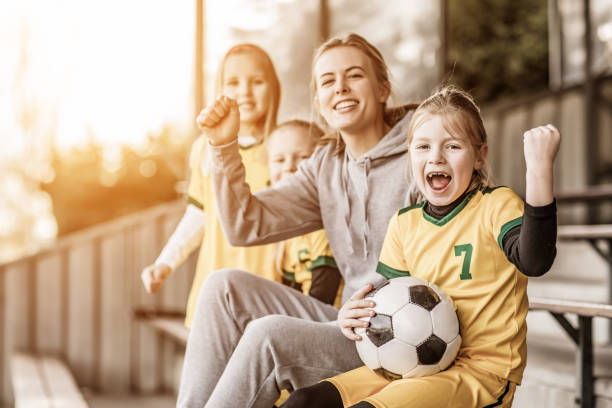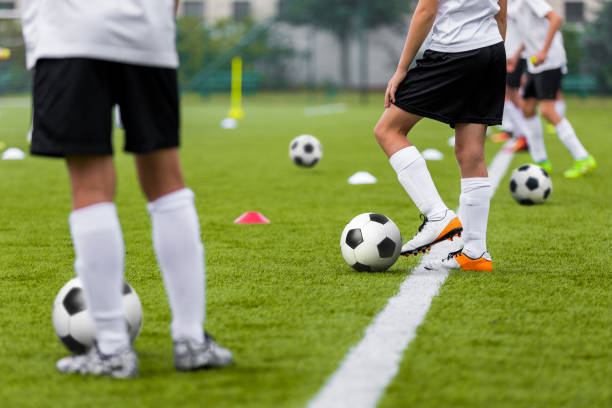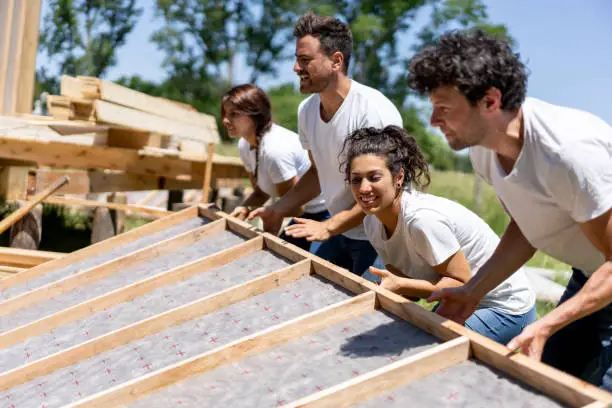In the realm of youth sports, the presence and importance of grants specifically for girls’ programs have become increasingly prominent. These grants are essential tools in bridging the gap in opportunities between young male and female athletes. Understanding the nature, purpose, and types of girls’ sports grants is crucial for those looking to foster growth and development in young female athletes.
Definition of Sports Grants and Their Purpose
Sports grants, in a broad sense, are financial awards given to individuals, teams, or organizations to support athletic programs, particularly those lacking sufficient funding. Unlike loans, these grants do not require repayment, making them a highly sought-after form of financial assistance in the sports community.
The primary purpose of these grants is to level the playing field, ensuring that girls from all backgrounds have the opportunity to participate in sports. They cover various needs, such as purchasing equipment, funding travel for competitions, providing training facilities, and even sponsoring educational workshops for coaches and athletes. This support is vital in areas where budget constraints would otherwise limit the accessibility of sports to young female athletes.
Types of Grants Available for Girls’ Sports
There are several types of grants available for girls’ sports, each with its own set of criteria and goals. Understanding these can help applicants find the right fit for their needs:
- Government Grants: These are provided by local, state, or national government bodies. They often focus on promoting health, fitness, and social cohesion through sports.
- Private Grants: Offered by corporations, private foundations, or individual philanthropists, these grants can be more flexible in terms of their use and often support specific causes or regions.
- Non-Profit Grants: Various non-profit organizations dedicated to sports or female empowerment offer grants to support girls’ sports programs. They might focus on specific sports, age groups, or community needs.
- Educational Institution Grants: Schools and universities often have grants available for their sports programs, including those specifically geared towards female athletes.
Each type of grant comes with its unique application process and requirements. Potential applicants should thoroughly research and understand these details to increase their chances of securing funding.
Finding and Applying for Girls’ Sports Grants, how…
Finding the right grant can be a daunting task, but with a strategic approach, it becomes manageable. Here are some steps to follow:
- Identify Your Needs: Clearly define what your team or organization needs funding for. Is it for equipment, travel, facility upgrades, or something else?
- Research: Utilize online resources, sports associations, and community networks to find available grants. Pay attention to eligibility criteria to ensure a good fit.
- Prepare Your Application: Gather all necessary documentation and craft a compelling story that highlights your team or program’s needs and goals.
- Apply: Follow the application guidelines meticulously. Be clear, concise, and persuasive in your proposal.
- Follow Up: After submitting your application, don’t hesitate to follow up with the grant providers for updates or feedback.
Impact of Grants on Girls’ Sports Programs
The impact of sports grants on girls’ programs is profound. These grants do more than just provide financial relief; they empower young female athletes to pursue their passions and excel in their sports. This support can lead to increased participation in sports, improved performance, and even the development of future leaders in the sports community.
Grants also play a crucial role in promoting gender equality in sports. By providing girls with the resources they need to compete and succeed, these grants help break down barriers and challenge the stereotypes that often surround women in sports.
III. The Importance of Girls in Sports
The role of sports in the development of young individuals cannot be overstated, and this is especially true for girls. In a world where gender stereotypes and inequalities still exist, sports serve as a powerful platform for empowerment, growth, and change. Recognizing the importance of girls in sports is not just about promoting physical activity; it’s about fostering a generation of confident, resilient, and healthy women.
Benefits of Sports for Girls
- Physical Health: Engaging in sports improves cardiovascular health, builds strong bones and muscles, and promotes overall fitness. Regular physical activity also helps in maintaining a healthy weight and reduces the risk of chronic diseases.
- Mental Well-being: Sports participation is linked to lower levels of depression and anxiety among girls. It provides a constructive outlet for stress and helps in developing a positive body image and self-esteem.
- Social Skills and Teamwork: Being part of a team teaches valuable social skills like communication, cooperation, and conflict resolution. Girls learn to work with others towards a common goal, an essential skill in every aspect of life.
- Leadership Skills: Sports empower girls to take on leadership roles and develop skills such as decision-making, problem-solving, and assertiveness.
- Academic Success: Studies have shown that girls who participate in sports tend to have higher grades and greater aspirations for continuing education.
- Building Resilience: Sports teach girls how to cope with failure and setbacks, nurturing resilience that will serve them well throughout their lives.
Gender Equality and Empowerment through Sports
Involvement in sports is a powerful vehicle for gender equality and empowerment. It challenges the traditional notions of femininity and demonstrates that girls are just as capable as boys in physical and mental pursuits. By excelling in sports, girls break down barriers and stereotypes, paving the way for greater gender equality in other areas of life.
Sports also provide a platform for social inclusion and empowerment. They can be particularly transformative for girls from marginalized communities, offering them a sense of belonging, a safe space to express themselves, and opportunities for personal development.
Role of Sports in Promoting Life Skills
Participation in sports equips girls with essential life skills that extend beyond the playing field. These include:
- Discipline and Time Management: Balancing training, competitions, and academic responsibilities requires discipline and effective time management skills.
- Goal Setting and Achievement: Sports teach girls how to set realistic goals,
work diligently towards them, and experience the satisfaction of achieving these goals, instilling a sense of accomplishment and the motivation to aim higher.
- Respect and Sportsmanship: Learning to play fair, respect rules, opponents, and officials, and handle both victory and defeat with grace are valuable lessons in humility and integrity.
- Confidence and Self-Advocacy: Sports participation boosts confidence, encouraging girls to assert themselves, voice their opinions, and advocate for their needs and rights.
- Risk-Taking and Overcoming Fear: Sports often require stepping out of comfort zones, which teaches girls to take calculated risks and not be hindered by fear of failure.
Impact of Sports on Future Opportunities for Girls
The impact of sports on a girl’s future is profound. Girls who participate in sports are often seen to have enhanced career and leadership opportunities. The skills learned on the field are highly transferable to the workplace, such as teamwork, leadership, and the ability to perform under pressure.
Additionally, participation in sports can open doors to scholarships and educational opportunities, particularly in countries where such prospects might be limited. For many girls, sports can be a pathway to higher education and a brighter future.
Community and Societal Impact
Girls’ participation in sports also has a significant positive impact on communities and society at large. It promotes a healthier, more active lifestyle, which can lead to reduced healthcare costs and a more energetic population. Sports can also be a unifying force, bringing together people from diverse backgrounds and fostering a sense of community and belonging.
Moreover, when girls participate in sports, they become role models for younger generations. They inspire other girls to take up sports, creating a virtuous cycle that promotes health, empowerment, and equality for future generations.
IV. Identifying Grant Opportunities
In the journey of empowering girls through sports, identifying the right grant opportunities is a crucial step. With a myriad of options available, navigating the grant landscape can be overwhelming. However, understanding how to effectively find and target the most suitable grants can be a game changer for girls’ sports programs.
Strategies for Researching and Finding Sports Grants
- Online Databases and Websites: Start by exploring online databases that list grants specifically for sports or women’s empowerment. Websites like Grants.gov, Foundation Directory Online, and local government portals can be valuable resources.
- Sports Associations and Federations: Reach out to national and regional sports associations, as they often have information on grants available for their sport. They might also offer grants themselves or partner with organizations that do.
- Community Groups and Local Businesses: Local community groups and businesses may offer grants or sponsorships for youth sports programs. Engaging with the local community can open doors to such opportunities.
- Educational Institutions: If the program is affiliated with a school or university, check if there are any grants available through the institution. They often have funds allocated for sports and extracurricular activities.
- Networking: Utilize your personal and professional networks. Attend sports conferences, seminars, and workshops where you can connect with potential grant providers or learn from those who have successfully secured grants.
- Social Media and Online Forums: Follow relevant organizations on social media and join online forums related to sports funding. These platforms often share updates on grant opportunities and application tips.
Key Sources for Grant Opportunities
While researching, focus on key sources that are most likely to offer grants that align with your objectives:
- Government Agencies: Both local and national government agencies are significant sources of sports grants. They often have specific programs aimed at promoting youth sports and gender equality.
- Private Foundations and Corporations: Many private entities aim to give back to the community through grants. Their focus might include sports, youth development, or women’s empowerment.
- Non-Profit Organizations: Non-profits, especially those focused on sports or women’s issues, frequently offer grants to support programs that align with their mission.
- Sports-Specific Organizations: Some organizations focus specifically on certain sports and offer grants to promote and develop these sports among girls.
Tips for Identifying the Right Grant
- Align with Your Goals: Look for grants that align with the specific goals of your program. Whether it’s for equipment, facilities, or travel, ensure the grant’s purpose matches your needs.
- Understand the Eligibility Criteria: Carefully read the eligibility requirements. Applying for grants for which you are not eligible is a common mistake and a waste of time.
- Consider the Application Process: Some grants may have a more complex application process than others. Assess whether you have the resources and time to meet these requirements.
- Pay Attention to Deadlines: Be aware of application deadlines and plan accordingly. Missing a deadline can mean missing out on an opportunity for an entire year.
- Seek Guidance: If you’re new to applying for grants, seek advice from those who have experience. Their insights can be invaluable in guiding you towards the right opportunities.
Navigating Challenges in Finding Grants
While searching for grants, you may encounter several challenges:
- High Competition: Many sports grants are highly competitive. It’s essential to make your application stand out by clearly articulating the impact and uniqueness of your program.
- Limited Availability: In some regions or for certain sports, the availability of grants might be limited. This calls for creativity in finding alternative funding sources or broadening your search to include general youth or community grants.
- Complex Application Processes: Some grants have complex application processes that can be daunting. It’s important to thoroughly understand the requirements and seek assistance if needed.
Several foundations are actively awarding grants to girls’ sports programs in 2023, each with their unique focus and criteria. Here’s a summary of some notable ones:
- The Women’s Sports Foundation (WSF): The WSF has announced the 2023 grant recipients for the Sports 4 Life Program. This initiative, co-founded with ESPN and supported by Gatorade, is designed to build a solid foundation for girls of color to thrive in sports. Celebrating its 10th anniversary in 2024, the program demonstrates WSF’s commitment to empowering girls through sports. The WSF also offers the Power of She Fund in partnership with Athleta, focusing on empowering businesses and organizations that prioritize girls’ and women’s well-being.
- GoGirlGo Project by the Women’s Sports Foundation: This education program targets girls, educating them about health risk behaviors and life lessons through sports. The accompanying grant program awards over $300,000 to organizations that serve girls from areas with high instances of health risk behavior, girls in areas under-served by sports programs, and girls in economically disadvantaged areas.
- The DICK’S Foundation: This foundation supports work related to its philanthropic priorities, including girls’ sports. They invite proposals either by directly contacting organizations or through an open application process, though the timing for these applications can vary.
- Laureus Sport for Good USA: For the 2023 grant cycle, Laureus USA has announced support for a wide range of sports-based youth development programs. This funding supports projects in over 30 different sports across several U.S. cities, demonstrating a broad commitment to youth development through sports.
These foundations play a pivotal role in promoting girls’ participation in sports by providing financial assistance and support to various programs and initiatives across the United States. Each foundation has its unique focus areas and application processes, so it’s important for interested parties to research and understand these details to apply successfully.
V. Eligibility and Requirements on Finding and Applying for Girls’ Sports Grants
When it comes to applying for girls’ sports grants, understanding the eligibility criteria and requirements is essential. Each grant has its unique set of rules and guidelines that applicants must meet to be considered. Navigating these can be complex, but with the right knowledge and preparation, the process becomes much more manageable.
Common Eligibility Criteria for Sports Grants
- Organization Type: Most grants are specific about the type of organization that can apply, such as non-profits, educational institutions, community groups, or sports clubs.
- Geographical Location: Some grants are region-specific, targeting certain cities, states, or even countries. It’s crucial to ensure your program operates within the grant’s geographical scope.
- Target Demographic: Many grants, especially those aimed at girls’ sports, may have specific demographic requirements, such as age range, gender, or socioeconomic background.
- Program Focus: The nature of your program should align with the grant’s objectives. Some grants might focus on health and wellness, while others might target leadership skills or academic achievement through sports.
- Financial Need: Demonstrating the financial need of your program is often a key requirement. This includes showing how the grant funds will be used and why they are necessary.
Required Documentation and Prerequisites for Applying
- Proposal or Application Form: This is the core document where you outline your program, its goals, and how the grant will support these goals.
- Budget Plan: A detailed budget showing how the grant funds will be allocated is crucial. This should include current financial statements and projected expenses.
- Proof of Non-Profit Status: If applicable, documents proving your organization’s non-profit status are often required.
- Program Details: Detailed information about your program, including past successes, number of participants, and any unique features, will strengthen your application.
- References or Endorsements: Letters of support or endorsements from community leaders, local government, or other relevant entities can be beneficial.
Crafting a Winning Application
- Understand the Grantmaker’s Goals: Tailor your application to align with the grantmaker’s mission and objectives. Show how your program will help achieve these goals.
- Be Clear and Concise: Your application should be straightforward, well-organized, and free of jargon. Clearly articulate your needs and how the grant will impact your program.
- Demonstrate Impact: Provide evidence or examples of how your program positively impacts participants and the community.
- Highlight Unique Aspects: If there’s something unique about your program, such as a novel approach or a particular success story, be sure to highlight it.
- Proofread and Review: Errors can detract from the quality of your application. Have multiple people review it for clarity and accuracy.
Tips for a Successful Grant Application
- Start Early: Don’t wait until the last minute. Starting early gives you ample time to gather all necessary information and documents.
- Follow Instructions Carefully: Each grant has specific guidelines. Failing to follow these can result in your application being dismissed.
- Seek Feedback: If possible, get feedback from someone familiar with grant applications, especially if they have successfully secured grants in the past.
- Be Honest: Do not overstate your needs or capabilities. Grantmakers appreciate honesty and realism in applications.
- Keep Records: Maintain records of your application, including when you submitted it and any correspondence related to it.
Navigating Application Challenges
- Complexity of Requirements: Some grants have complex requirements. Break these down into manageable tasks and address them systematically.
- Limited Resources: If resource constraints make it difficult to complete a strong application, consider seeking volunteer help or partnering with other organizations.
- High Competition: Given the competitive nature of grants, don’t rely on a single grant. Apply for multiple grants to increase your chances of securing funding.
VI. Crafting a Winning Application
Securing a grant for a girls’ sports program is more than just filling out an application; it’s about crafting a narrative that highlights the unique value and impact of your program. A winning application is one that not only meets the technical requirements but also resonates with the grantor’s mission and objectives.
Understanding the Grantor’s Perspective
- Research the Grantor: Understand the goals and values of the organization offering the grant. What is their mission? What kind of projects have they funded in the past?
- Align Your Goals: Your application should clearly demonstrate how your program aligns with the grantor’s objectives. Make a compelling case for how your project contributes to their mission.
- Address the Criteria: Be meticulous in addressing each criterion of the grant. Show how your program meets or exceeds these requirements.
Crafting a Compelling Narrative
- Tell Your Story: Share the story of your program. What inspired its inception? What challenges have you faced, and how have you overcome them?
- Highlight the Impact: Provide specific examples of how your program has positively impacted participants. Use data, testimonials, and stories to paint a vivid picture.
- Demonstrate Need: Explain why the grant is necessary. How will the funding help you achieve your goals or expand your program?
- Show Sustainability: Grantors want to invest in programs that have a future. Show your plan for the program’s sustainability beyond the grant period.
Writing the Proposal
- Executive Summary: Start with a strong executive summary that encapsulates the essence of your proposal.
- Detailed Program Description: Provide a detailed description of your program, including its objectives, target demographic, activities, and timeline.
- Budget Justification: Present a clear and detailed budget. Explain how each part of the grant will be used and justify the expenses.
- Outcomes and Evaluation: Describe the expected outcomes and how you will measure the success of your program.
- Supporting Documents: Include any required supporting documents, such as financial statements, letters of support, or proof of non-profit status.
Tips for a Strong Application
- Be Clear and Concise: Avoid jargon and technical terms. Your proposal should be easy to understand.
- Be Honest: Don’t exaggerate the impact or capabilities of your program. Be realistic about what the grant will enable you to do.
- Attention to Detail: Carefully proofread your application. Spelling and grammatical errors can detract from the professionalism of your submission.
- Follow Instructions: Adhere strictly to the application guidelines, including word limits, formatting, and submission procedures.
Overcoming Common Challenges
- Resource Constraints: If you lack the resources to create a compelling application, consider seeking assistance from a grant writer or collaborating with partners who have experience in grant applications.
- Differentiating Your Application: In a competitive field, make your application stand out by emphasizing what makes your program unique. This could be an innovative approach, a specific demographic you serve, or notable achievements.
- Handling Rejection: If your application is not successful, seek feedback. Understanding why you were not selected can provide valuable insights for future applications.
To further enhance your grant writing skills and stay on top of these trends, consider diving into some insightful literature.
Here are a few recommended books:
- The Ultimate Guide to Federal Grant Applications: Techniques for Success – This book is a must-read for anyone looking to navigate the complex world of federal grant applications. It offers practical techniques, insider tips, and a comprehensive understanding of what it takes to create successful federal grant applications.
- Advanced Grant Writing for Nonprofits : Focuses on sophisticated techniques for experienced grant writers. It delves into complex aspects of proposal development, offering strategies for dealing with competitive grant environments and large funding bodies.
- Mastering Grant Writing: A Nonprofit’s Guide to Effective Proposal Development and Submission: This book serves as a comprehensive guide, covering the entire process of grant writing. It includes tips on understanding funders’ perspectives, crafting compelling narratives, and the nuances of proposal submission.
- Becoming the Grant Guru: Freelancer’s Guide to Success : Tailored for freelance grant writers, this book provides insights into building a successful career in grant writing. It includes strategies for finding clients, managing projects, and maximizing the impact of grant proposals.
- The Small Business’s Guide to Winning Grants : This resource is particularly useful for small businesses looking to secure grants. It offers practical advice on identifying suitable grant opportunities, understanding the requirements of small business grants, and crafting winning proposals.
- Grant Readiness Guide: Preparing to Triumph in Funding Opportunities : A comprehensive resource for organizations at various stages of grant preparedness. It provides a roadmap for developing organizational capacity, aligning projects with funders’ goals, and creating compelling applications.
- Her Capital: Unlocking Women’s Small Business Grants: Specifically designed for women entrepreneurs, this book offers guidance on navigating the landscape of small business grants for women. It includes insights into grant sources, application strategies, and tips for leveraging grants to grow a business.
Join our email list now for exclusive grant-writing tips and unique grant opportunities delivered straight to your inbox. Click here to Subscribe. Don’t miss out!




